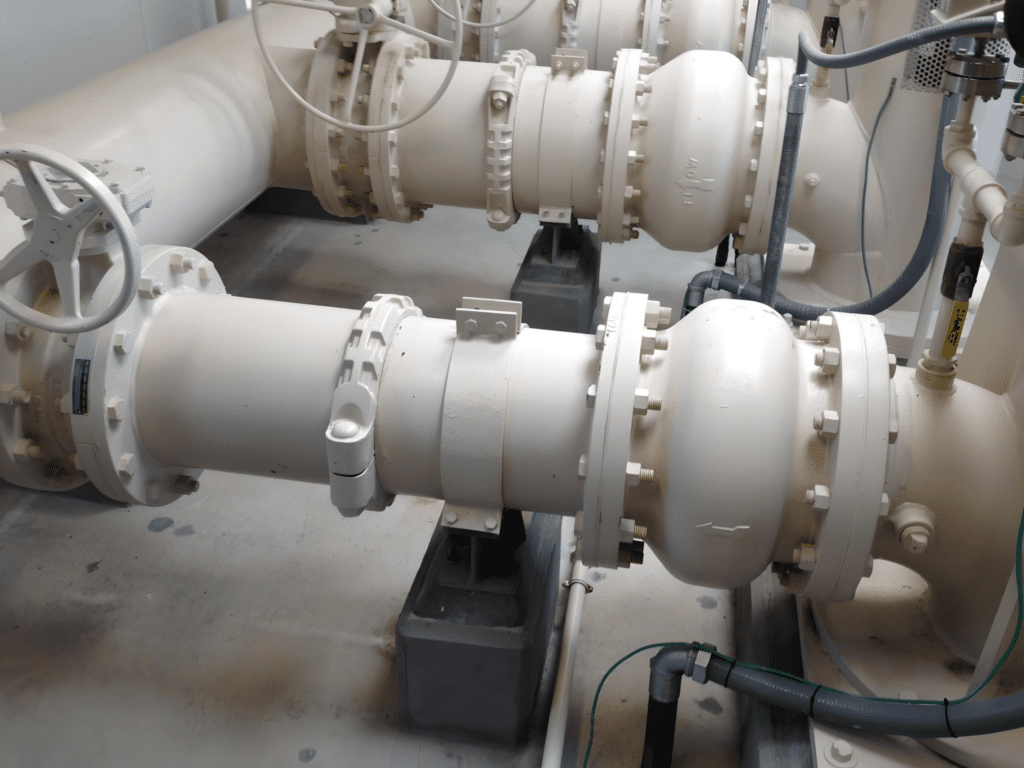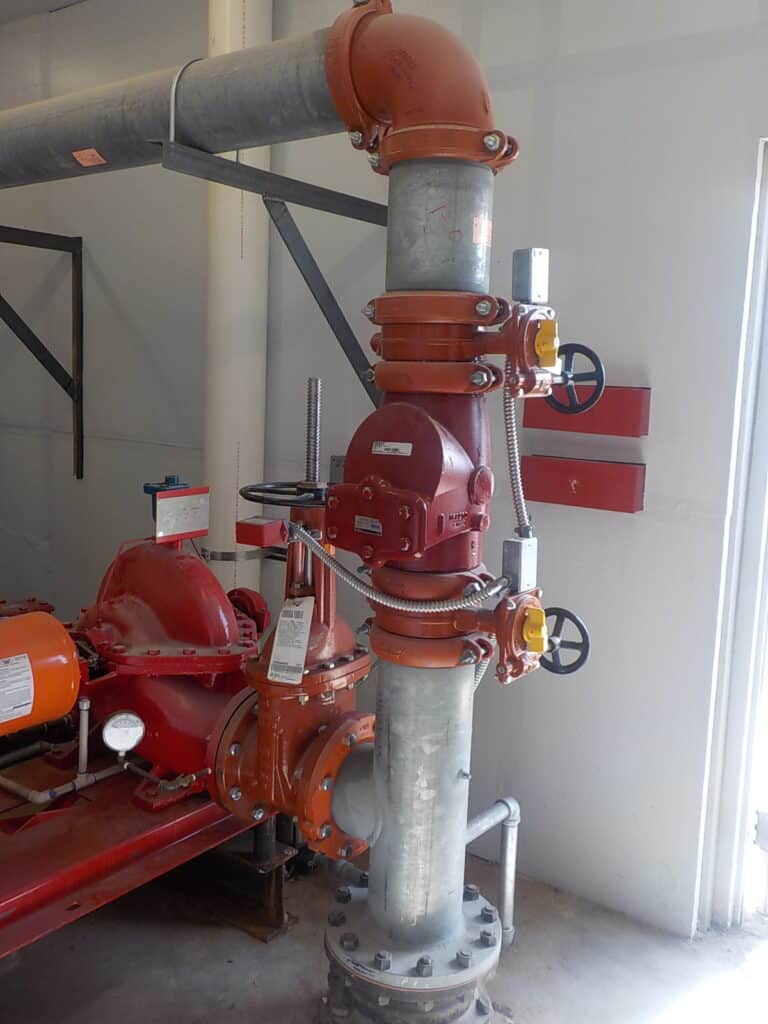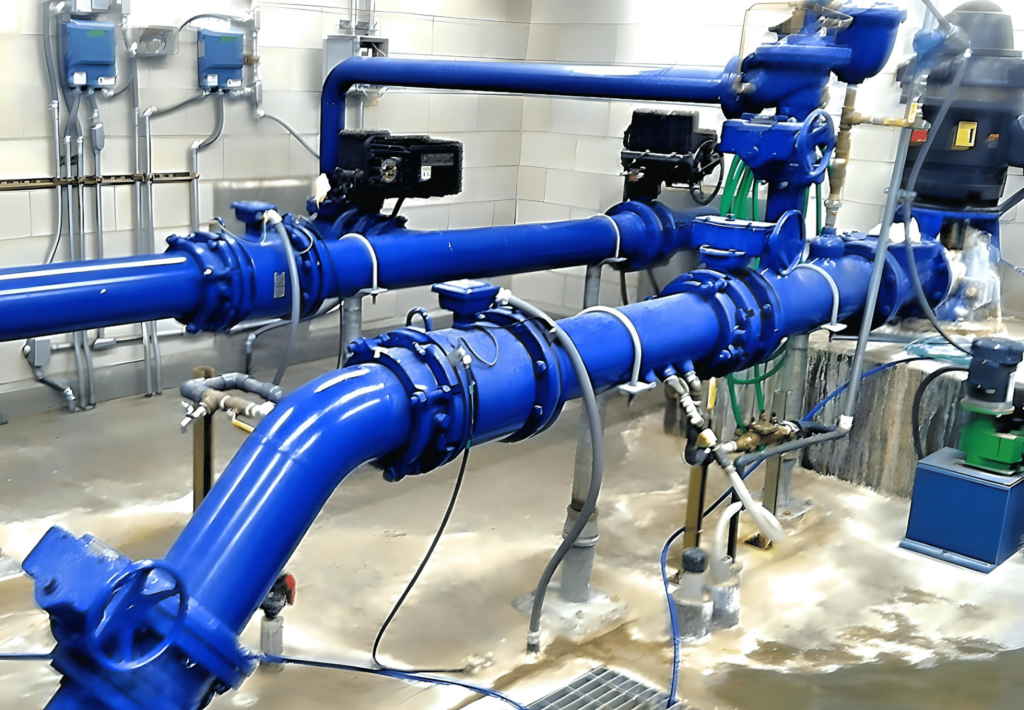If you are in an area prone to seismic activity, you may need non-structural seismic design. For existing buildings, a seismic retrofit may be necessary to protect the building and life-safety systems from seismic activity.

Here is what you need to know about what non-structural seismic design is for, when it’s needed, and how VIE Engineers can help you achieve security and stability with our innovative, code-compliant seismic designs.
What Is Non-Structural Seismic Design For?
Non-structural seismic design is for elements within a building that are not considered part of primary or secondary structural systems. Non-structural seismic bracing design is completed for: electrical, mechanical, computer, piping, cable tray, conduit, fire water systems, HVAC systems (ductwork rooftop, building mounted equipment, including large custom HVAC units), and more.
When is Non-Structural Seismic Design Needed?
Typically, local or state building codes drive the need for seismic bracing. Authority-having jurisdictions and system designers should agree whether seismic bracing is needed early on in the project. The International Building Code requires seismic bracing in tall structures in regions with moderate-to-high seismic activity.
The point of seismic bracing is to resist horizontal motion. Vertical motion is not typically a concern during a seismic event, but horizontal shaking and swaying is. Non-structural systems are especially vulnerable to the inertia force on the structure earthquakes enact. This can result in extensive damage from pipes breaking or becoming unattached. Seismic braces resist the seismic load non-structural systems experience during earthquakes through bracing them to the structural components of a building.
More About Non-Structural Seismic Design
The failure of non-structural components can result in significant life-safety hazards, extensive damage, and economic loss. During a seismic event, buildings experience more movement than is normal, as do their non-structural systems. While the structural elements are often carefully designed and detailed, non-structural systems can be either overlooked or inadequately managed.
There are 4 key components to seismic design:
- Protecting building occupants from moving or falling objects.
- Ensuring people can exit buildings safely in a seismic event.
- Maintaining functionality during and after an earthquake.
- Minimizing damage to structures and systems.
The cost of non-structural systems is typically greater than the structure itself. Even in small earthquakes, non-structural damage can be a significant life-safety hazard. Buildings can be rendered unusable for extensive periods of time because of the damage earthquakes did to their MEP (mechanical, electrical, and plumbing) systems. Non-structural seismic design mitigates potential for damage, keeping people and property safer.
More About Fire Water Bracing

After a seismic event, there is increased possibility for fires to occur. Fires can result in devastating damage and fatalities very quickly. As such, buildings in areas subject to seismic activity need to have seismic protection for their sprinkler systems in order to ensure that it remains capable of protecting the building and people in it after a seismic event.
The NFPA provides guidelines for seismic protections for fire water systems. During a seismic event, non-structural elements can move violently, resulting in damage. Seismic bracing firmly attaches the fire water systems to structural components that are expected to move as a unit. This provides support in order to resist horizontal motion, so the pipes move with the structural component they are braced against, rather than against them. Depending on the size of the pipe, it may only require vertical restraint, as opposed to braces.
The NFPA 13 requires seismic bracing for fire water systems such as risers, main lines, and branch lines that are 2.5 inches or larger.
VIE’s Experience With Non-Structural Seismic Design Projects
Over the past 5 years alone, VIE has completed over 100 different projects, some of which are as follows:
- The Salt Lake City International Airport
- 4 different LDS temples
- Data centers throughout the Western United States
- Education buildings for USU and U of U
- Hospitals for IHC in SLC and Provo
- High schools and secondary schools
- Fire-water bracing (a new area for VIE)
- The SLC Courthouse
- And more.
For a comprehensive list of the non-structural seismic design projects that VIE Engineers has done, please contact us for more information.

Innovative, Code-Compliant Seismic Bracing Design
VIE Engineers provides comprehensive seismic engineering services throughout the United States. Our work is all-inclusive, meaning that we do not just provide you with the design. We also work with Connectors for Construction (CFC) in order to provide our clients with the whole package, for a turn-key solution.
Rely on our 40+ years of experience for seismic design that fulfills all code requirements and your needs. Contact us today to schedule a consultation or to learn more about our seismic engineering services.
